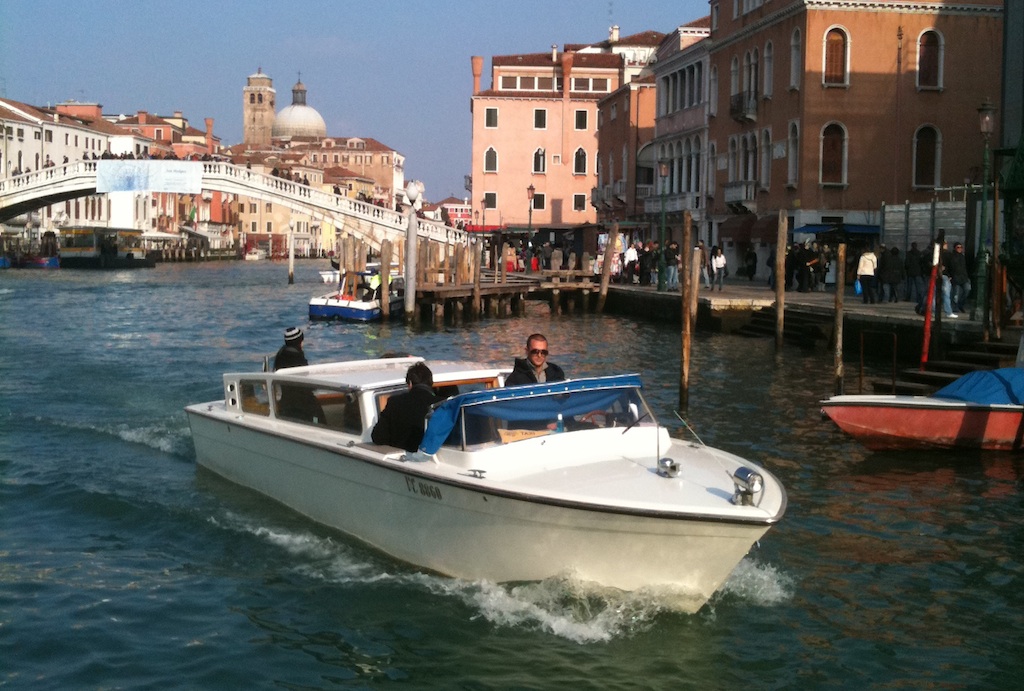Biennale d’Arte: Venice, untill 22nd November 2015

The 56th International Art Exhibition entitled All the World’s Futures, curated by Okwui Enwezor and organized by la Biennale di Venezia chaired by Paolo Baratta, will be open to the public untill Sunday, November 22nd, 2015 at the Giardini della Biennale and at the Arsenale.
89 National Participations will be exhibiting in the historical Pavilions at the Giardini, at the Arsenale and in the city of Venice. The countries participating for the first time in the Exhibition are Grenada, Mauritius, Mongolia, Republic of Mozambique and Republic of Seychelles. Other countries are participating this year after years of absence: Ecuador (1966, then with the IILA), the Philippines (1964), and Guatemala (1954, then with the IILA).
The Holy See will again be participating with an exhibition to be held at the Sale d’Armi, in the spaces that the Biennale has renovated for new permanent pavilions. In the Beginning … the Word became flesh is the title chosen by Cardinal Gianfranco Ravasi (President of the Pontifical Council for Culture) for the Pavilion, which is curated by Micol Forti (Director of Contemporary Art Department of the Vatican Museums).
The Italian Pavilion at the Arsenale, organized by the Italian Ministry for the Cultural Heritage and Activities, with thegeneral Direction for arte e architettura contemporanee e periferie urbane, is curated by Vincenzo Trione.
44 Collateral Events, approved by the curator of the International Exhibition and promoted by non profit national and international institutions, present their exhibitions and initiatives in various locations within the city of Venice.
The International Exhibition
The 56th International Art Exhibition forms a unitary itinerary that starts at the Central Pavilion (Giardini) and continues at the Arsenale, with over 136 artists from 53 countries, of whom 89 will be showing here for the first time. Of works on display, 159 are expressly realized for this year edition.
“This is our 56th edition. The Biennale is now 120 years old, and year after year it moves forward and builds on its own history, which is formed of many memories but, in particular, a long succession of different perspectives from which to observe the phenomenon of contemporary artistic creation.”
Paolo Baratta introduces this year’s edition with these words, recalling that “Bice Curiger brought us the theme of perception, of ILLUMInation or light as an autonomous and revitalizing element, and Massimiliano Gioni was interested in observing the phenomenon of artistic creation from within, and turned his attention to the inner impulses that drive mankind and the artist to create images and bring representations to life.”
“The world before us today exhibits deep divisions and wounds, pronounced inequalities and uncertainties as to the future. Despite the great progress made in knowledge and technology, we are currently negotiating an ‘age of anxiety’. And once more, the Biennale observes the relationship between art and the development of the human, social, and political world, as external forces and phenomena loom large over it. Our aim is to investigate how the tensions of the outside world act on the sensitivities and the vital and expressive energies of artists, on their desires and their inner song. One of the reasons the Biennale invited Okwui Enwezor as curator – Baratta states – was for his special sensitivity in this regard.”
“Curiger, Gioni, Enwezor, a trilogy in a sense – President Baratta recaps – three chapters in a research process engaged by la Biennale di Venezia to explore the benchmarks that can help us formulate aesthetic judgments on contemporary art, a “critical” question following the demise of the avant-gardes and “non-art”.”
“Okwui does not claim to pass judgement or prognosticate; his wish is to bring together arts and artists from throughout the world and from different disciplines, to instate a Parliament of Forms, as it were. A global Exhibition where we may question or at least listen to artists comingfrom 53 countries, many of them from geographical areas that we paradoxically insist on defining as peripheral. This will also help us uncover the latest tendencies regarding the geography and routes taken by contemporary art, thanks to a special project focusing on the Curricula of the artists operating around the world. A Parliament for a Biennale of varying and intense vitality, therefore.
“Everything here is exhibited against the backdrop of the Biennale’s 120-year history. Fragments of the past of various kinds may be found in every corner, given also the fact that the Biennale is active in Art, Architecture, Dance, Theatre, Music, and Cinema. (…) To borrow the words of Walter Benjamin, the Biennale hosts “dialectical images”.
“And once again, I am glad – concludes Baratta – that I did not listen to the regrettable considerations made in 1998 claiming that the exhibition with foreign pavilions was outmoded and should be done away with, perhaps in favor of a white cube, an aseptic space in which to erase history, exercise our abstract presumptions, or offer hospitality for the dictatorship of the market. It is our multi-faceted, complex reality that helps us avoid perils such as these. The great mountain of the fragments of our history grows year by year. Opposite stands the even greater mountain of all that was not shown in past Biennales.”
